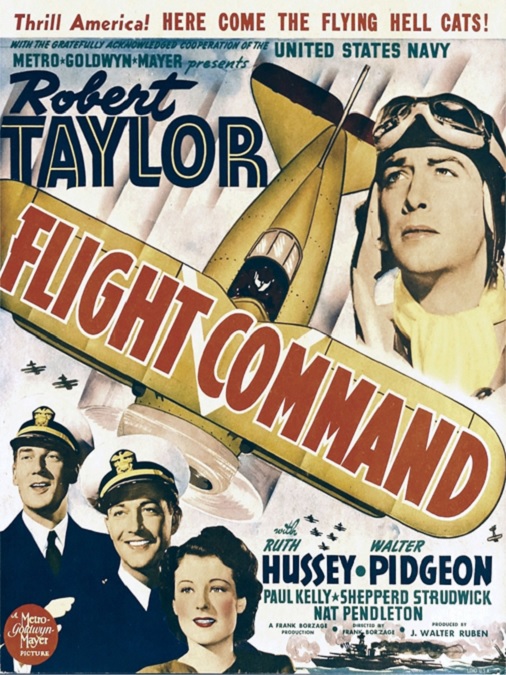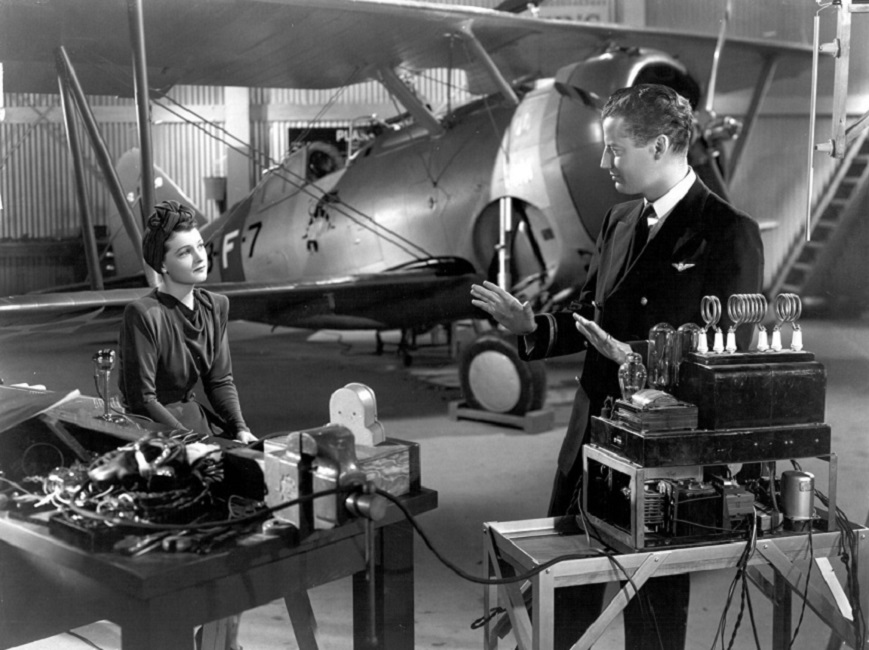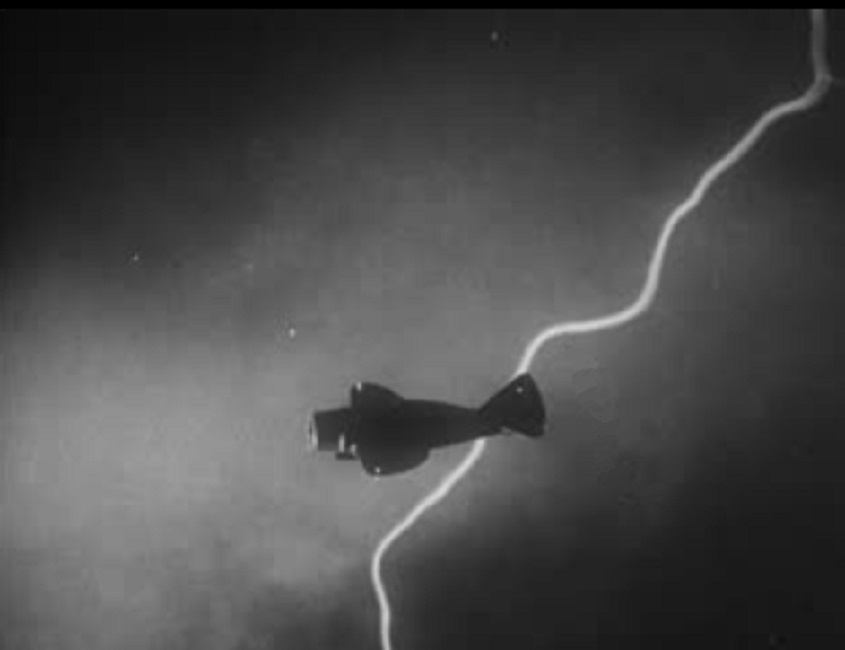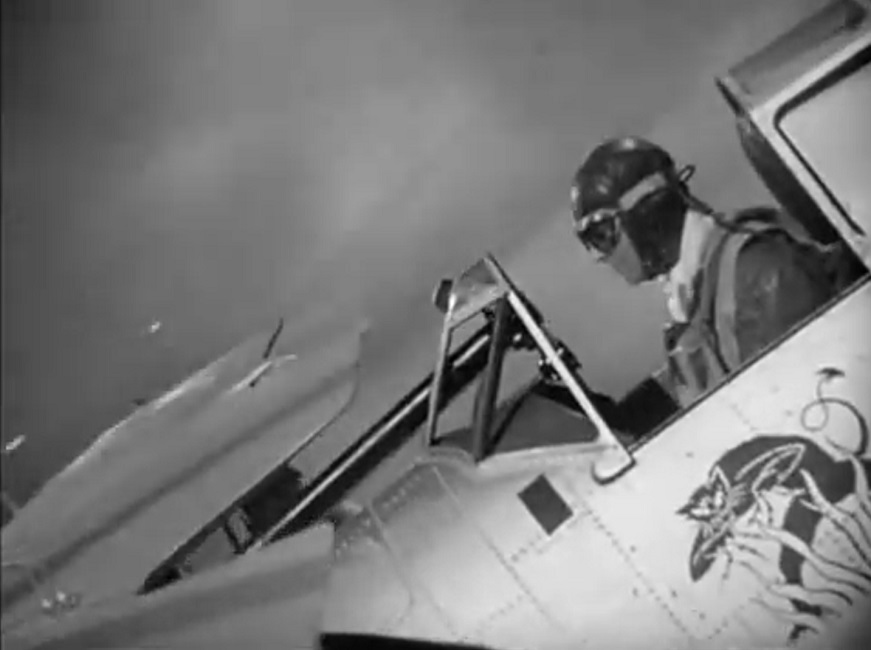



Flight Command – 1941

The special effects for this movie were, I’m sorry to say, nothing better than average. That’s because there just weren’t that many to critique. Most of what we were given were fighter pilots doing some fancy stunt flying. And there’s nothing wrong with that, except that we’ve seen it all before. This movie was a simple war propaganda film with a bit of drama, a bit of romance, and not much else.
So how was the stunt flying? It wasn’t bad. There was a lot of nifty formation flying that made everything look very organized and military, like a new Navy uniform. In an impressive little sequence, the film’s protagonist, played by Robert Taylor, nearly gets himself killed during a training competition. He flies into a giant wind sock, blinding himself as it wraps around his head in the cockpit. His plane goes into a spinning nosedive, which was cool. The pilot POV shots were intense as you could see the approaching surface of the water below him spinning wildly! Except… in one of the pulled back shots of the spinning plane, I could clearly see the wires holding up the mock-up of the airplane as it fell. There was even a little mini jet-pack attached to the tail to make the hanging craft spin. At least the wide shots were real, and thus pretty impressive.
And to be fair, there were some really cool shots where the fighter pilots were taking off from an aircraft carrier. But really, all they did was attach cameras to different parts of the planes as they took to the air. Yes, those were some pretty stunning visuals, but they were neither innovative nor creative.
There were also two interesting plane crashes in the film. However, the first of those sequences was flawed. The crash showed the plane hitting the ground and bursting into flames. Then the un-burned the pilot is showed being lifted into an ambulance. Nope! Not buying that one! Not with how that plane crashed! That pilot is dead, and his mangled body is being incinerated. And there was no way for the rescuers to get to the incapacitated pilot because of the flames! The crash effect went too far overboard for the purpose of the story. At least the second crash appeared survivable. Still, the crashes were both competent special effects.
Either way, that was about it for the visual effects: fancy formation flying, some very skilled stunt pilots, and lots of rear-projected close-ups of the flying pilots. And lest I forget, one of the film’s sub-plots was a man trying to develop a radio-based method of landing in extreme fog conditions. The final climax showed five planes flying through fog so thick, they couldn’t see more than a few feet. Some of those shots were pretty exciting to watch. I’m just not really sure why this movie was nominated for Best Visual Effects, though. Not only have we seen it all before, we’ve seen it done better. For me, the impressive stunt flying just wasn’t enough.